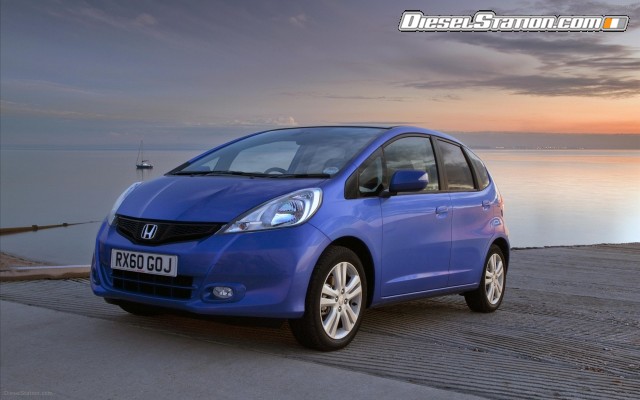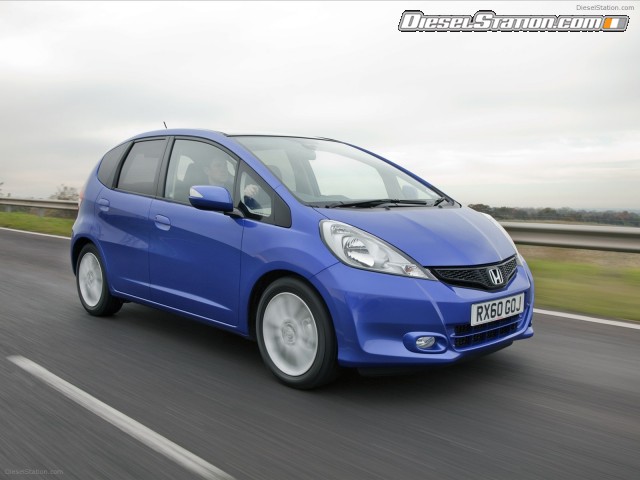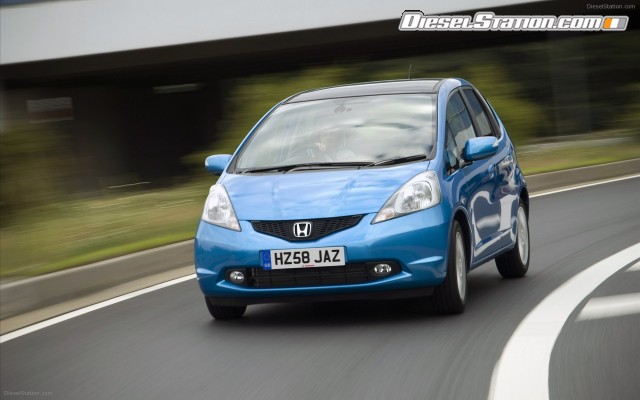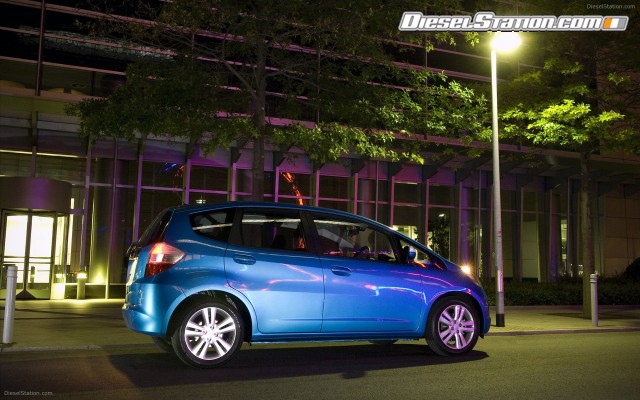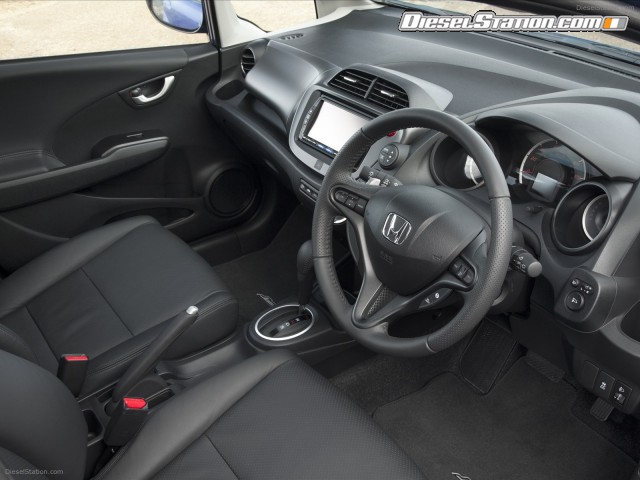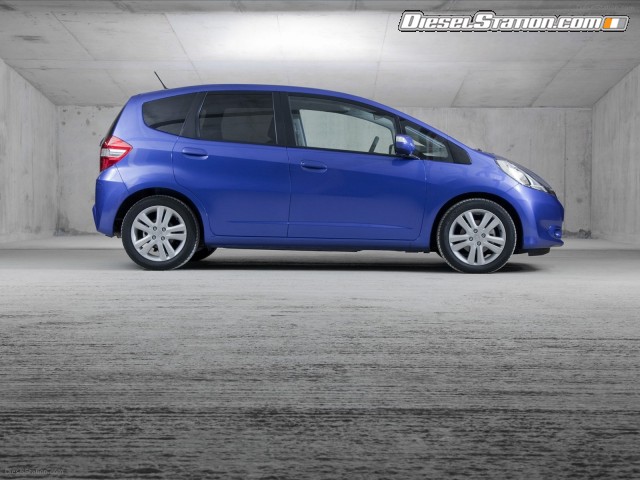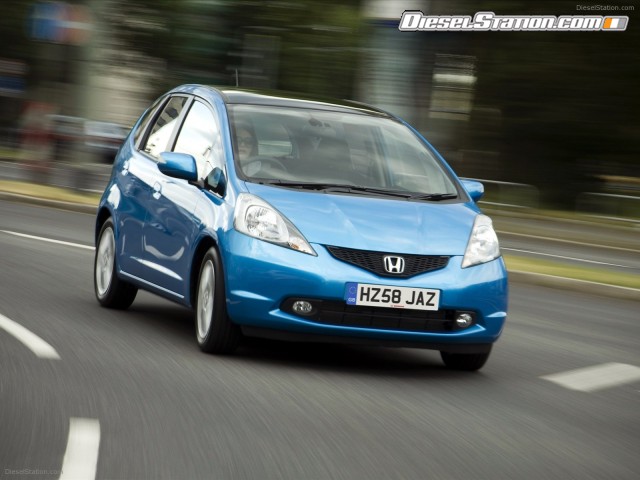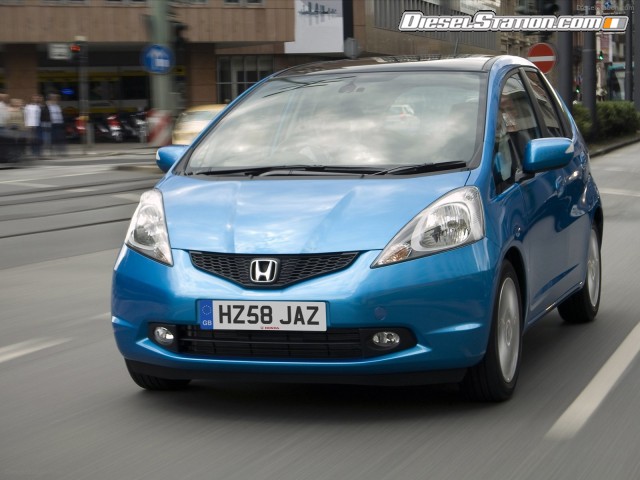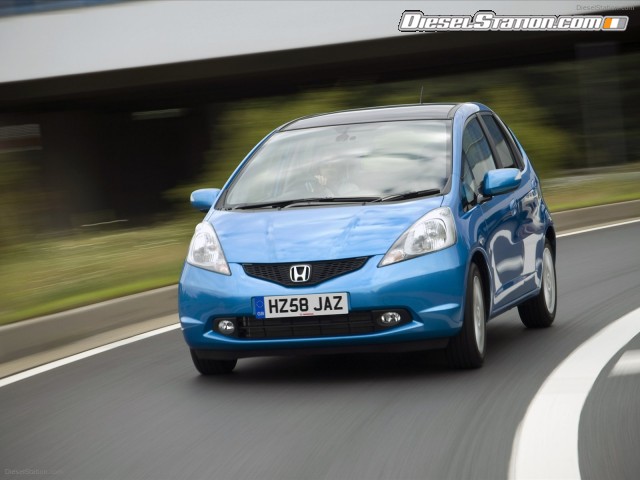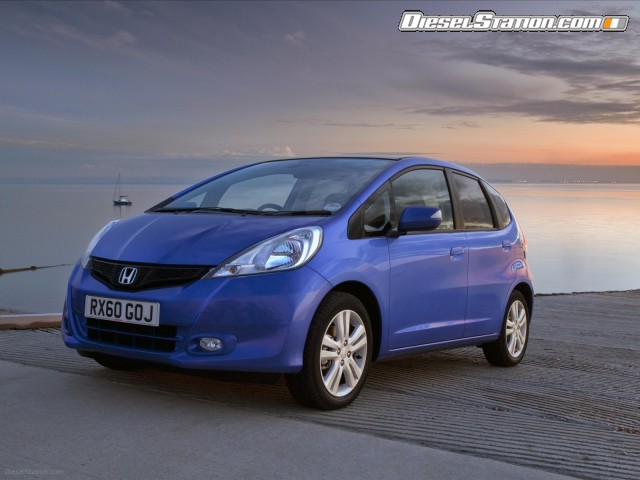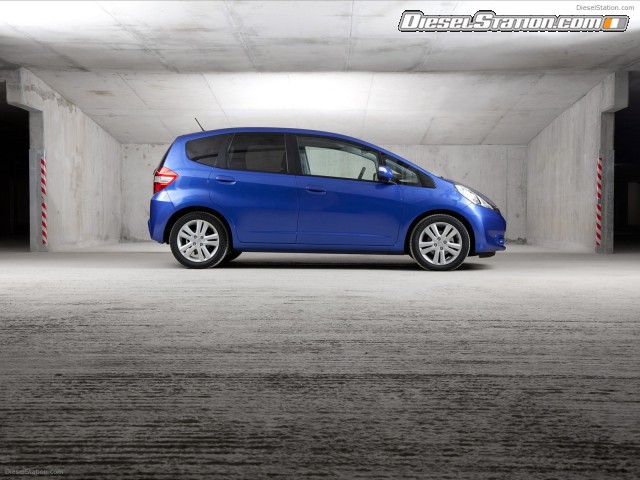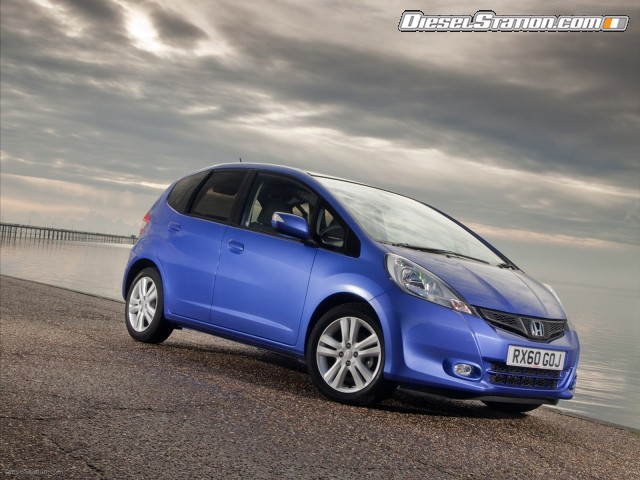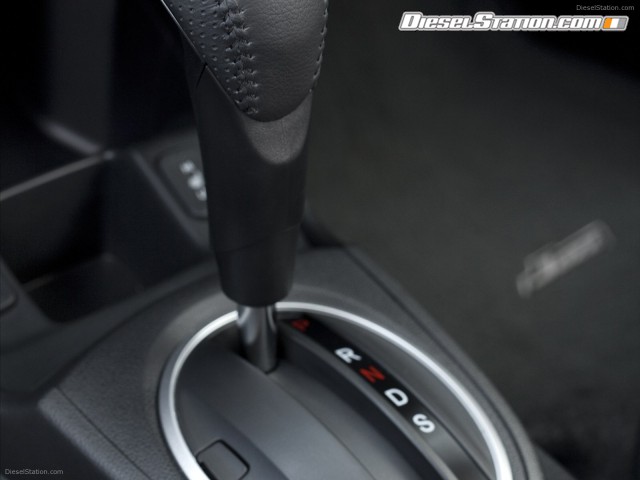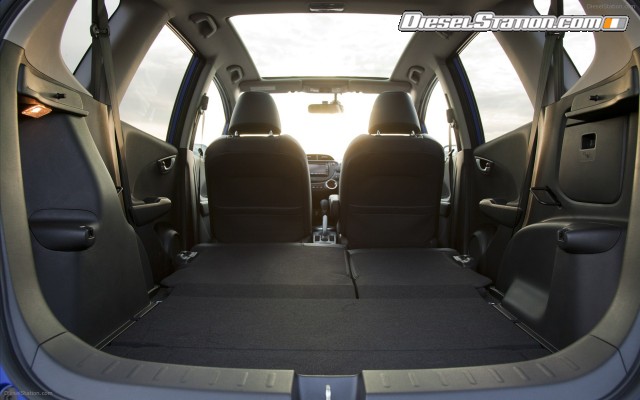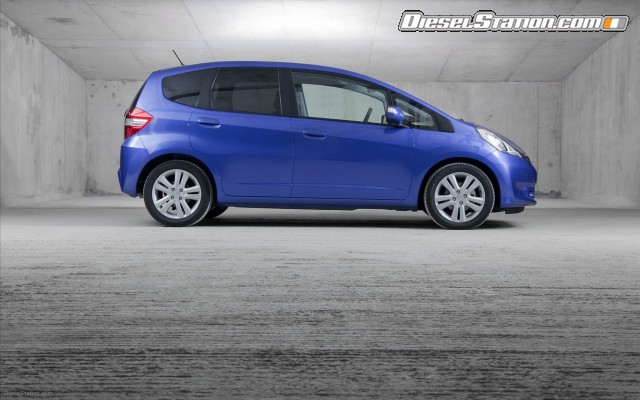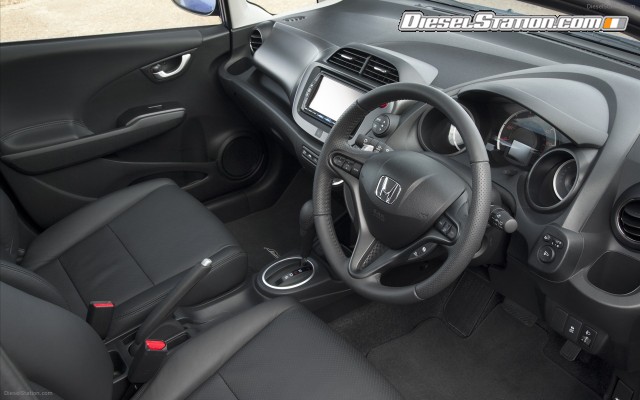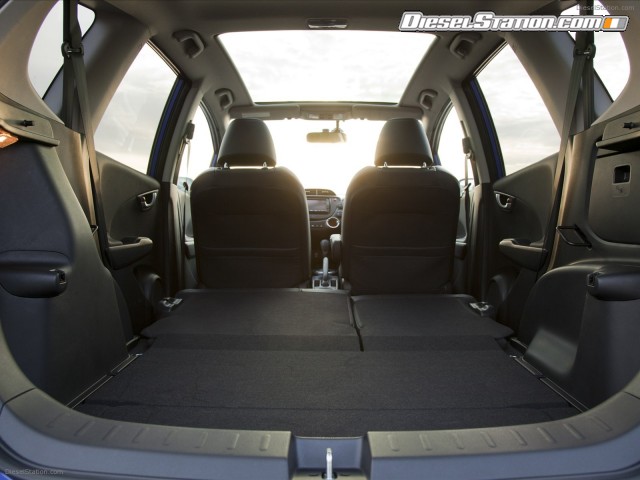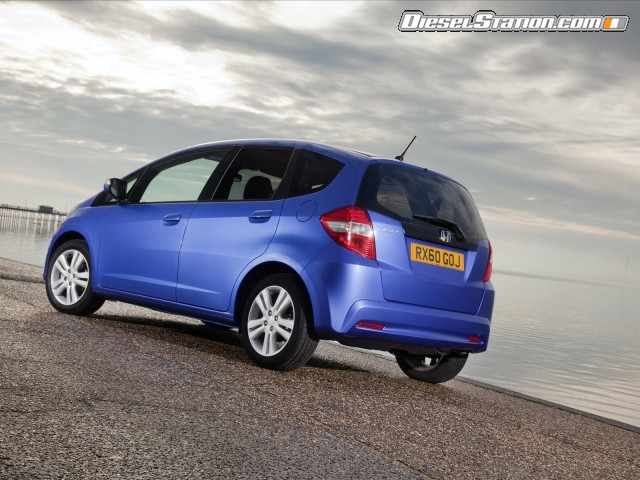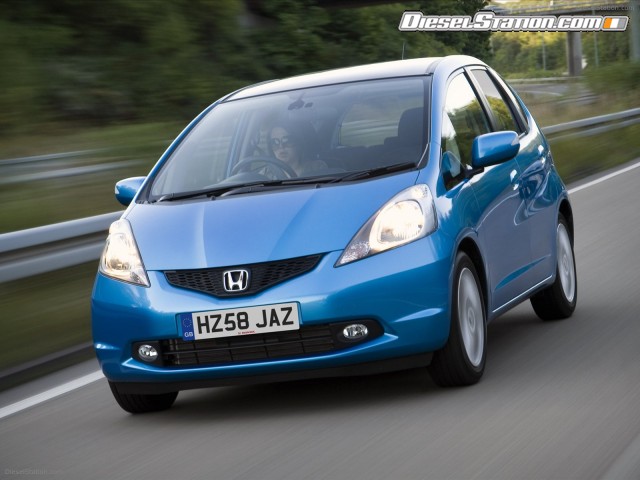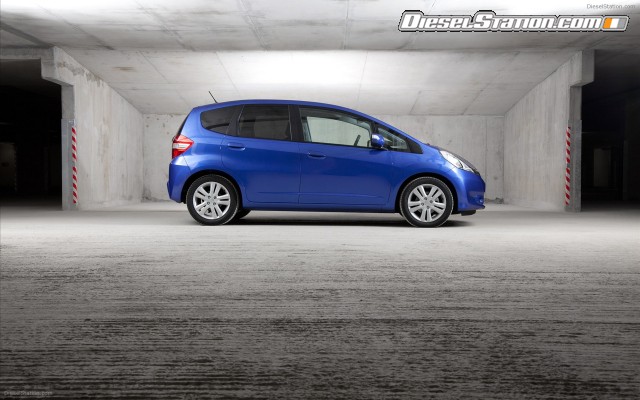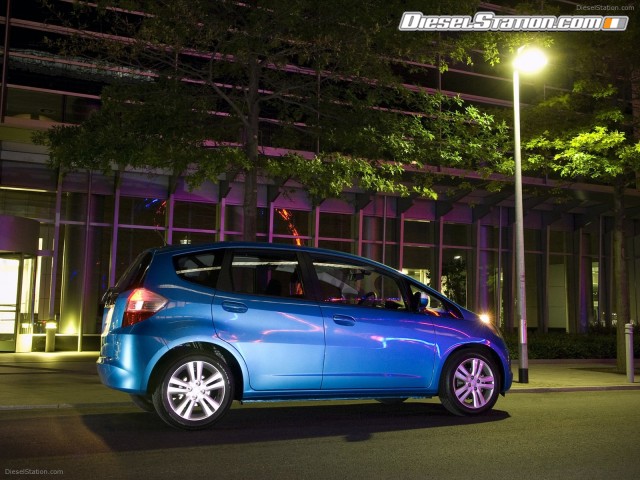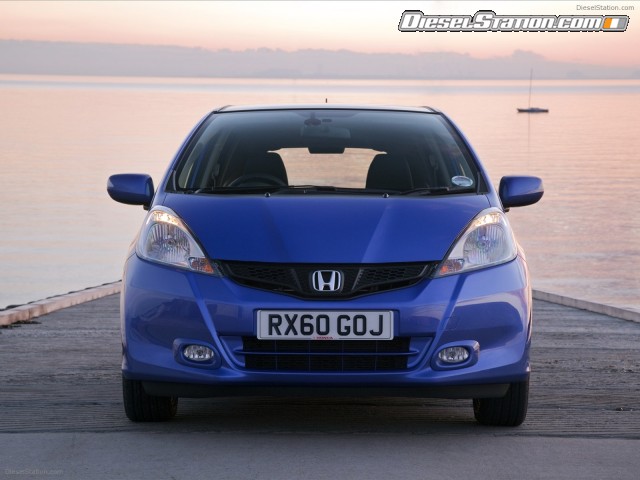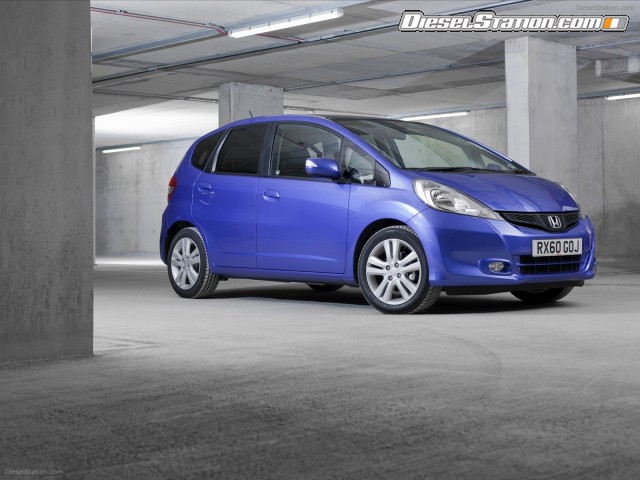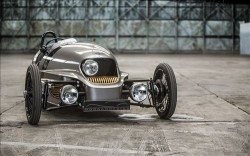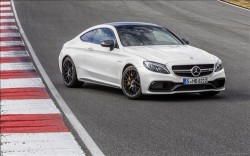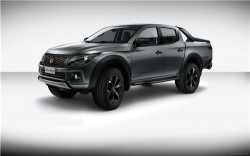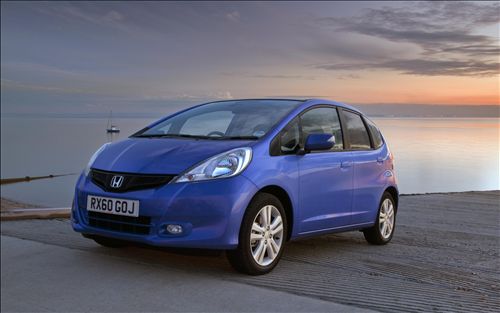[
Source URL : http://www.hondauk-media.co.uk/cars/jazz/jazz/presspacks/
Honda has made a series of improvements to the Jazz – one of the UK’s most popular superminis – with enhancements to ride comfort, flexibility and the re-introduction of a CVT transmission. Running costs, emissions and fuel economy are all improved through the addition of a hybrid variant to the range. .
- Introduction of hybrid technology
- Jazz Hybrid benefits from free road tax for the first year and only £10 per year thereafter
- CVT gearbox is back
- Suspension improvements refine ride and improve handling
- Magic Seats feature a new reclining function to improve comfort
- New, fresh face
- Six new exterior colours
- Addition of leather upholstery
- Improvement in CO2 emissions and fuel consumption across the range
- The Jazz petrol models will be built at Honda’s manufacturing plant in Swindon alongside the Civic and CR-V while the hybrid variant will be produced in the Suzuka factory in Japan.
Jazz: the story so far:
- Over 3.5 million Jazz (or Fit) sold worldwide
- Over 220,000 sold in the UK alone
- First generation launched in the UK in 2002
- Second generation had its UK launch in 2008
- Production of the Jazz moved to Honda’s manufacturing plant in Swindon in late 2009
- In the top five of UK retail sales charts for six years
- JD Power class winner six years running
As the Jazz enters its ninth year of production the challenge was to freshen up and improve on the car without compromising on the characteristics that make the Jazz so popular. But by enhancing the car’s strongest qualities, the engineers at Honda have taken the Jazz on to the next stage, producing a car with greater flexibility, better looks, increased ride comfort and improved eco credentials.
Introducing the Jazz Hybrid - a cleaner no-compromise choice
Honda has introduced its proven and reliable hybrid technology to its best-selling car. This new variant will sit alongside the established 1.2 and 1.4 litre petrol engines and will bring Honda hybrid motoring to a whole new audience as the Jazz becomes the world’s first B-segment hybrid car.
The Jazz Hybrid has been given the same powertrain as found in the Insight – the 1.3-litre i-VTEC petrol engine with Honda’s IMA technology and automatic CVT gearbox. This brings CO2 emissions down to 104g/km and delivers 62.8 miles per gallon on the combined cycle. These figures mean free road tax for the first year and only £10 per year thereafter.
More importantly perhaps, Honda has managed to include the technology without compromising the incredible versatility of the Jazz. It features all the practicality of the petrol variant, most notably, the famed Magic Seats and an impressive load-lugging space of up to 883 litres.
The Jazz Hybrid demonstrates Honda’s continuing commitment to petrol-electric hybrid technology as it becomes the third car currently on sale in the UK to use the IMA system, sitting in showrooms alongside the Insight and CR-Z.
- Back by popular demand…
Welcome back to the CVT gearbox
The CVT transmission appeared in the previous Jazz model (2002-2007) and due to overwhelming customer demand, Honda has reintroduced the gearbox, along with a few clever tweaks.
The new gearbox matches the economy and emissions of the outgoing i-SHIFT 1.4-litre model with a CO2 value starting at just 125g/km. The rest of the Jazz range has benefited from reductions in CO2 values and improved fuel economy. The 1.4-litre manual variant has emissions starting at 126g/km (down from 128g/km) and uses 51.4mpg on the combined cycle. The 1.2-litre fuel-sipper uses 53.3mpg and also drops two grams of CO2 to 123g/km.
- ‘Jazzing’ up the Jazz
A refresh wouldn’t be complete without a new look and Honda’s designers haven’t disappointed. They have worked their magic on both the exterior and interior of the car to give it a fresh look and feel.
Changes to the exterior have not been purely cosmetic. As well as giving the car a new look, the revised front and rear bumpers have also been designed to reduce drag, which in turn improves fuel economy. Design features have also been added to distinguish between the Hybrid and petrol versions. As an example, the front grille, headlights and tail lamps on the Jazz Hybrid are all finished in a chrome blue surround to mark it out from the petrol models.
There are also six new colours available across the range – Azure Blue, Polished Metal, Urban Titanium and Ionized Bronze are additions to the petrol variants– while the Hybrid version also benefits from a vibrant Lime Green Metallic and Taffeta White along with Azure Blue.
Leather upholstery makes a very welcome appearance for the first time in the Jazz range. This addition gives a whole new feeling to the interior of the car and is an important option for customers downsizing from a larger premium vehicle and for those who enjoy their little luxuries.
- Room for improvement
Just as you thought the Jazz couldn’t get any more practical, it does just that.
The Magic Seats, famed for their flexibility and multiple seating and cargo-carrying configurations - have now got even better with the addition of a reclining rear seat. The rear seats can now recline 73mms to increase rear passenger comfort.
- Chassis changes
The suspension settings on the Jazz have been adjusted to increase ride comfort and improve handling. The revised model has also been given additional steering resistance to improve “on-centre” feel to promote greater drivability.
Who will buy the new Jazz?
The fact the Jazz is so practical is the reason it attracts such a wide range of people, from nurses and families with babies to grandparents and driving instructors. This broad appeal is one of the reasons why the car has featured at, or near, the top of the sales charts every year it’s been on sale in the UK.
The average age of a Jazz customer is 56 years old and the revised car will continue to exceed the demands of this mature market. However, the car’s sharp new looks and new hybrid technology will also appeal to younger customers and those wishing to downsize.
Jazz is popular in the corporate market and Honda expects to gain more sales through this channel with the latest car, especially given the high level of specification and the improved environmental credentials.
How many do you plan to sell in the UK?
The UK target for 2011 will be of similar volume to the current Jazz, sales of which totalled 27,191 units in 2009. This placed it in the top three of its competitor set. The Hybrid version is expected to account for around 10 per cent of Jazz sales.
What are the main competitors for Jazz?
B-segment superminis such as VW Polo, Toyota Yaris, Ford Fiesta, Vauxhall Corsa and Mazda2 are all competitors to the Jazz. The Hybrid model goes up against cars such as the VW Polo Bluemotion and the Toyota Yaris 1.4 d TR.
When does it go on sale?
The revised Jazz goes on sale in the UK in February 2011.
Jazz Family Timeline – how we got where we are today...
The design of small cars is one of the great challenges that Honda has taken on. From the N360 of the 1960s to the Civic of the 1970s, Honda has consistently created small cars that have become industry benchmarks. Behind this success has been Honda’s ‘man maximum, machine minimum’ concept which calls for small cars to be designed by allocating a maximum amount of space to the cabin while minimising the space required for mechanical components.
Launched in March 1967, the N360 became Japan’s best-selling car within two months of hitting showrooms. By designing it from the cabin down, Honda engineers were able to create more interior space than had ever been seen before in a small car. It’s pride and joy was a two-cylinder, air-cooled 354cc engine that produced a modest 31 horsepower.
The original Civic went on sale in July 1972 and soon achieved the stated goal of becoming a global model sold on the worldwide market. A true pioneer that created a new market segment, the Civic soon became known as a car for everyone.
The City first appeared in 1981 with an unusually tall body that allowed for a spacious interior. With countless innovations in both function and style, it proved that Honda’s obsession with maximising space was leading to bigger and better things.
Debuting in 2002, the Jazz soon became known as an innovative supermini that changed expectations and attitudes towards small cars. Thanks to its remarkably efficient interior packaging the Jazz wowed both the critics and the British buying public.
The second generation was launched in 2008 which took the innovative concept of the Jazz to the next stage – with more space, better versatility and smarter looks, to improve what was already an excellent car.
In October 2009, production of the Jazz moved to Honda of the UK Manufacturing (HUM) in Swindon where it joined the Civic and CR-V to become Honda’s third British-built model.
The Jazz is such a successful car – how did you go about improving it?
Mr Hitomi: The ample cabin space, versatility, impressive fuel efficiency for a petrol car and exterior design are just some of the reasons why the Jazz has been so successful. However, several weaknesses were identified such as, interior quality, driving dynamics, noise, uncomfortable i-SHIFT transmission and inefficiency compared to diesels. In the revised Jazz we focussed on improving these weaknesses by adding the CVT gearbox and hybrid technology to make the car more competitive and to strengthen the unique Jazz brand image.
What were the challenges with fitting the hybrid technology to the Jazz?
Mr Hitmoi: There were three major challenges:
- To accommodate relatively big hybrid devices without compromising usability and the large boot space
- To improve fuel efficiency. The body of the Jazz was designed as a compact car and the challenge was to improve air resistance within budget
- To give distinctive features to differentiate the hybrid version from the petrol model in design and drivability
Mr Shishido: In order to maintain the brilliant versatility of the Jazz, the battery had to be housed under the boot floor, while the air duct for cooling the technology has been accommodated in the cabin. To make this new layout feasible, the geometry had to be looked at thoroughly in order to meet the cooling performance criteria and to reduce the noise level. Furthermore, various technologies have been introduced to reduce travel resistance with the compact yet tall body of Jazz.
Mr Nagamine: Our aim was not just to introduce the hybrid system, but to also understand what customers expect in a hybrid car and actually implement these expectations in the Jazz. The quiet and seamless driving sensation is just one of these expectations that customers have with cutting-edge hybrid systems. We have addressed these issues by optimising the geometry and features of every single area. Had we focussed on packaging alone, these features would not have been implemented.
Who do you see driving the revised Jazz, particularly the Hybrid?
Mr Hitomi: While diesel cars are efficient on long journeys, the benefit of hybrid cars is the efficiency in city driving where acceleration/deceleration is frequently repeated. Our Jazz Hybrid embodies features such as; quietness, easy handling thanks to the CVT transmission, high view point, good visibility, manoeuvrability, and ample cabin and boot space. Given these features, I see drivers who live in city areas appreciating the car.
Mr Shishido: I believe those who mainly drive in city areas will benefit most from the Jazz. Deceleration energy is regenerated and can be used either for acceleration or EV driving, while the compact body with the two-pedal feature will make city driving easier and cleaner.
Mr Ota: I imagine the Jazz will be well received by young families who will benefit from the space and versatility.
What new feature will customers enjoy most?
Mr Hitomi: The hybrid system. Quiet yet powerful acceleration and engine start up.
Mr Nagamine: The ambient lighting of the speedometer
What feature are you most proud of?
Mr Hitomi: The way we have combined and housed two of Honda’s unique technologies – the centre tank layout and the IMA system - to fit into the car without compromising on space and versatility.
Mr Shishido: The ECON function in the hybrid system.
Mr Ota: The EV display on the dashboard.
What are the benefits of the CVT gearbox?
Mr Ota: For me it’s the torque converter. It enables a smooth and powerful start up, while the continuous and seamless gear shift offers a relaxing drive and excellent fuel economy.
What changes have been made to the driving experience?
Mr Ota: In the cars equipped with the CVT transmission, acceleration stroke and engine revolution are now controlled linearly which enables a smooth and torquey drive. Also, by eliminating friction, the steering feel has improved. Harshness in the suspension has also been minimised.
What are the new interior and exterior design changes?
Mr Nakahara: The European market is very competitive and the interior quality of the Jazz needed improvement in order for the car to be a serious contender for the top spot, hence why we introduced leather seats – this is the first time ever that leather is available in the Jazz. Our focus on the exterior was to improve aerodynamics and thanks to the new front and rear bumpers the aerodynamic performance has been improved by two per cent.
Mr Nozawa: The revised model retains all the popular usability and versatility features. We also managed to keep the boot floor height and the Magic Seats in the Hybrid version even after the introduction of the IMA technology. Other interior improvements include:
- Coordinating the surface materials and dark metallic colour for panels
- Introduction of leather
- Use of separate illumination colours (orange for petrol and blue for Hybrid) thus differentiating the Hybrid from the rest of the range
Customer case studies
As its countless satisfaction awards prove, the Jazz is a car loved by its owners. If you’ve ever wondered why, here are some clues.....
Name : Joan Pridham
Lives : Dukinfield, Cheshire
I'm now on my second Honda Jazz — I've actually been driving one since 2003.
After driving the first one for nearly 6 years, there really was no alternative on offer that could truly match the Jazz. It's easy to drive, easy to park and so very versatile. All my friends are really amazed at how easy the seats are to adjust and the car's ability to transform from a comfortable 5 seater, to what is, in truth, a mini estate car.
My husband regularly 'borrows' it for quick trips out, saying it's so useful, when he needs something from the hardware store. Thing is, he likes driving it too.
I do voluntary work for the RSPCA and my colleagues there think that the Jazz is the best car they have ever seen. They love its load carrying capability and the fact it can be back to a 5 seater within a minute.
One of the funniest things that occurred with the Jazz was on my way to an RSPCA fund-raising event, where I had the rear seats down and the whole of the back filled with cuddly toys. It never occurred to me how funny this actually looked until I arrived at the venue and my friends stood there laughing. It appeared that there was a zoo in the back of my Jazz, with lots of little cuddly faces peering out of the windows.
My son moved house recently and it was the only vehicle that could take his rather large TV - one up for the Jazz, you could say!
Name : Karen Clark
Lives : York
I'm the very lucky owner of Blue the Great Dane, who loves to travel by car. We go out most days in the car into the countryside for muddy walks. When I needed a new car that would accommodate such a big dog (she weighs 10 stone) I had trouble as no one would let me try her in their cars.
I wanted a small car that I would feel confident driving but most of them came with ridiculously small boots. My husband had heard about the Jazz and the claims of the space inside so I went to look at Marshall Honda in York. They were not only friendly and not patronising but said the only way to see if Blue would be happy in a Jazz was to let her in one! The salesman opened up the boot for Blue, who got in with room to spare. But the best bit was the magic seats. Blue could easily wander into the back and she sat herself down and looked at us as if to say "sold".
I bought a new one, made a cover for the back, put in a dog bed and Blue and I have had hundreds of happy journeys. I love the reliability and the level of comfort.
We also had to buy a tumble dryer and I said it would fit in the back with the seats down and my hubbie didn't believe me. He was amazed when it did fit and had space to spare.
I'm hoping to buy another new Jazz soon and hopefully Blue and I will have many more journeys ahead of us. We love our Jazz!
Name : Mary Ardron
Lives : Petts Wood, Kent
I bought my first Honda Jazz in August 2005. To that point, my husband John and I had been sharing a Honda Prelude — and generally fighting over it at the weekends — so we decided to go ahead and treat ourselves to a second car.
John was very keen on Hondas, having owned several Preludes in the past and been impressed with their reliability. We thought the Honda Jazz would suit me well, and we liked the style of the car for the relatively affordable purchase price. The other thing that struck me was the flexibility with the back seats, and as we were also thinking of purchasing a new house - with the potential for house refurbishment - we thought that kind of flexibility would come in handy.
Shortly after I took delivery of my new Jazz in August 2005 I found out I was pregnant, and we had a little girl in April 2006. The car took on an extra level of importance to me as I was then at home using it several times a day. I found it incredibly convenient for nipping into those tight parking spaces, as well as being very fuel efficient.
We eventually moved house in August 2008. Our new house needed lots of refurbishment, and the flexibility of the Jazz's back seats has come into play time and time again. Generally, the car has stood up well to some pretty tough treatment.
In October 2010 we decided to upgrade to a new car. Despite being very happy with the Jazz, we looked around at the competition and considered many alternatives. However, after paying a visit to our local Honda dealership we decided to switch to the new Jazz SI model.
Name: Dave Pinnell
Lives: Cardiff, South Wales
I first became aware of the Jazz when it began topping various motoring league tables for customer satisfaction, reliability and innovation. I remember calling into my local Honda dealership to see what all the fuss was about and, of course, the reasons were plain to see — excellent build quality, ingenious interior design and fuel economy.
At the time I was tied-in to a PCP deal on another vehicle but, when the contract was approaching its end, I revisited the dealership and became the proud owner of what is undoubtedly the best car I’ve ever owned or driven.
Although, professionally, my time is predominantly spent at the computer, my interests beyond graphic design include music-making which can involve transporting significant amounts of equipment to and from venues.
Whilst studying for a music degree I helped form a three-piece band and, as the only car owner, it fell to me to transport the gear from place-to-place. With a bit of thought it was possible to load the Jazz with the entire PA system and two complete rigs for both the guitarist and bass player — as well as the two musicians! A pretty impressive feat, as I’m sure anyone that’s ever played in a band would have to agree.
As if the fantastic carrying capacity wasn’t impressive enough, the fuel economy is none too shabby either! On one longish-distance trip, I maintained a steady 50 mph each way and managed to achieve a mind-boggling 64 mpg. In fact I was so impressed with this that I had to wake my wife to come and witness the fuel consumption display when I got back in the early hours!
Versatility
One of the reasons so many people buy the Jazz is for the class-leading load space. Despite its size, total luggage space in the Jazz can stretch to a huge 883 litres, which beats all competition in the supermini sector and rivals that of some in the class above!
The addition of environmental technology can often result in compromises for the driver, but not with the Jazz Hybrid. The Hybrid features the practicality found in the petrol models including an impressive load-lugging space of up to 883 litres with the rear seats down. Engineers have managed to keep the Magic Seats by integrating the IMA system, battery pack and power control unit under the boot floor.
|
Jazz IMA |
Jazz 1.2 |
Jazz 1.4 |
|
|
Full seating (Storage under floor) |
300 (3) |
337 (42) |
335 (64) |
|
Rear seats folded down to the window line |
883 |
883 |
883 |
|
Rear seats folded down to the roof |
1320 |
1320 |
1320 |
Magic Seats
Magic Seats are standard across the range and if you thought they couldn’t get any more useful you’d be wrong. Thanks to the introduction of reclining rear seats, the interior is more flexible than ever.
The 2:1 split Magic Seats – which offer multiple seating and load-carrying configurations – drop-down in one motion without the need to remove the headrests or adjust the front passenger seat position. For added versatility, the rear seats now recline 73mm to increase rear passenger comfort and flexibility.
How the Magic Seats work:
Utility Mode
With the seats folded down, Jazz offers a perfectly flat load floor that’s 1720mm long; enough for four large suitcases or a few kids’ bikes. With just two of the rear seats collapsed there is sufficient space and length for a surfboard (if you happen to have one); or two 26-inch frame mountain bikes stood upright.
Long Mode
For all flat-pack furniture transporters out there, this mode uses the full length of the Jazz. By fully reclining the passenger seat and dropping the Magic Seats flat, a massive 2.4 metre long load space is revealed.
To return the rear seats to a seating position, you simply lift the assembly back up; the seat bottom remains locked to the seat back and is simply released by pulling up the leg frame
Tall Mode
Locking the seat base in the ‘up’ position against the seat backs creates a second load area between front and rear seats to stow taller items in the rear foot-wells. The clearance here is 1280mm tall and items such as bikes, golf clubs, a folded wheelchair, tall plants and furniture can all fit in. And since the rear doors open to 80 degrees, it is easy to make full use of this feature.
ULTR Double-Trunk
The versatile interior of the Jazz is enhanced by the Double-Trunk boot feature (available on 1.4-litre models only) that can be configured in four ways to suit different load requirements.
The Double-Trunk comprises of a flexible folding floor, under-floor storage well and cargo net. The clever part is how the floor folds to create either a multi-layered load space or opens up to make use of the boot’s total volume.
How it works
Upper Mode – The floor can be ‘half-folded’ up to make a two-tier shelving unit with cargo net, creating a double load space. Heavier items can be stored below and lighter items can be placed on the upper shelf, which incorporates the cargo net – perfect for holding fruit, wine or other items prone to rolling around.
Lower Mode – With the floor in its normal position, the cargo net can be revealed to store awkwardly shaped items. Using the cargo net in Lower mode means there’s still a large flat load space available.
The 230 mm deep under floor space is ideal for storing sports gear or raincoats and umbrellas and once the lid is on, it keeps dirty objects separate from the other luggage.
Tall Mode – The under floor storage well adds 64 litres of load space and can be concealed (by the floor) or opened out by folding the floor up against the rear seats or removing it altogether. This extra depth is ideal for carrying taller items like a pushchair. A load lip just 605mm from the ground makes loading and unloading easy and convenient. And finally, a handy shopping bag hook is located on the left hand side of the luggage bay.
Storage galore
The Jazz comes packed with thoughtfully designed storage spaces to stow all the paraphernalia a modern family car requires:
• A two-tier glove box which is cooled using a
stream from the air conditioning unit on 1.4-litre ES
and EX models and all Hybrid variants – ideal for keeping drinks and choccies cool
• No less than 10 cup and bottle holders spread
around the cabin – one at either end of the
instrument panel, two in the centre console ahead
of the gear lever, two behind the handbrake, and
one in each of the four door pockets set into the
curved door panels
• The front console storage area with sub-divider holds items
such as drinks cartons, iPods and mobile phones
• Centre console behind handbrake with
storage recesses
• Pocket to the right of the steering wheel
• Passenger seatback pocket on most models
No space is left unused. There’s even a storage compartment in the base of the left hand rear seat squab. Once opened by unscrewing two knurled wheels, smaller items like the owners manual and maps can be kept there.
Panoramic roof
For the ultimate sense of space, the 1.4 EX and Jazz Hybrid HX models are fitted with a full length panoramic roof that extends over the rear seats for a great aerial view. It’s great to park up, lie back and admire the view but also makes the rear of the car brighter and more airy for passengers.
Although the glass is heat absorbent, there’s an electric blind which can be opened or closed to keep the cabin at the perfect temperature. Let’s hope the panoramic roof brings us luck with the British weather!
Interior Design
The modern and high-tech interior is constructed using high quality materials and as a result, Jazz occupies a niche between the supermini and compact MPV sectors – offering the style and practicality of both.
Leather upholstery makes a very welcome appearance for the first time in the Jazz range. Along with the addition of chrome rings defining the air vents, instruments and climate controls across the dashboard, the leather trim gives a whole new premium feeling to the interior of the car and is an important option for customers downsizing from a larger premium vehicle and for those who enjoy their little luxuries. Leather seats are standard on the Jazz Hybrid in HX trim and available as an option on the 1.4-litre petrol EX model.
Another change across the range is a new darker dashboard material which contrasts strongly with the orange and blue back lighting of the dials, gauges and displays across the dashboard. The orange backlighting colour is unique to the petrol powered variants, while the Hybrid version uses the blue lighting to differentiate the model from the rest of the range.
Visibility
Slim A-pillars, a large windscreen and front quarter windows all contribute to excellent forward visibility. Big door mirrors and retractable rear headrests ensure the view out of the rear window is totally un-obscured.
The 1.4 litre petrol EX and Hybrid HX are equipped with a full length panoramic roof that extends over the rear seats for a great aerial view and sense of space. It also makes the rear of the car brighter and more airy for passengers.
High specification cabin
High quality, tactile materials, stylish designs and tasteful colours give the Jazz cabin a plush and upmarket feel. Plus small car doesn’t necessarily mean sparse – there’s a comprehensive equipment list, including iPod connectivity and air conditioning.
The comfortable front seats are fitted with springs and padding which offer support during cornering, as well as having active headrests for greater safety. In addition, a tilt and telescopic steering wheel is now available as standard across the range with a wide range of adjustment to ensure the controls suit drivers of all heights. Meanwhile, ratchet lever driver’s seat height adjustment, wide pedal spacing and a footrest for the left foot create a more comfortable driving position. Rear seat passengers also benefit from a new reclining function which tilts back up to 73mms.
Instrument panel
The fascia is positioned low down for good forward visibility and features a large three meter instrument cluster with central speedometer, a tachometer on the left and a fuel gauge to the right. The panel is permanently back-lit in orange (petrol) or blue (Hybrid) to ensure good legibility at all times. All models feature soft-touch indicators that deliver three indicator flashes before self cancelling, for easier lane changing.
A useful LCD multi-information display set within the centre of the speedometer provides information such as instant and average fuel economy, range, outside temperature and a service indicator based on actual driving conditions – all controlled by buttons on the steering wheel.
Audio systems
All grades of Jazz are equipped with a single CD/audio system and auxiliary jack with MP3/WMA playback capability, and volume control which automatically adjusts according to vehicle speed. In addition, ES and EX 1.4-litre petrol and HS and HX Hybrid variants are fitted with a USB adapter located in the front centre console storage box which enables iPods, plus a variety of other digital audio players, to be played through the Jazz audio system. iPods can also be operated using the audio system and, depending on type, will charge once connected. The connector cable is located in the upper glove box compartment.
Additional rear door speakers and steering wheel audio controls feature on ES and EX 1.4-litre petrol and HS and HX Hybrid models.
Air conditioning
Manual air conditioning is fitted as standard on the 1.2-litre S A/C while automatic climate control air conditioning is standard on ES and EX 1.4-litre variants and all Hybrid models. The 1.4-litre petrol and Hybrid models also feature a valve contained in the upper glove compartment which can be opened to provide a stream of cool air.
Exterior Design
‘Big car in a small package’ is a good way to describe the Jazz. While the revised car is just as cleverly packaged, fresh styling gives the Jazz a new appearance.
New front and rear bumpers are the main parts to have influenced the look of the car. These have also been designed to reduce drag as the airflow passes over the Jazz’s body and to avoid turbulence when the airflow detaches from the rear.
Aerodynamic efficiency is a vital part of saving fuel and that’s why the Jazz keeps the familiar slim A-pillars and forward leaning shape, but adds an aero styled grille and the redesigned bumper. These styling improvements aid aerodynamic efficiency on all Jazz models helping the Cd figure to fall from 0.336 to 0.330.
Cd (or Coefficient of drag), simply reflects the amount of ‘drag’ the shape of an object causes as it passes through the air. The lower the figure, the less air the car has to move to go along and the more energy is saved.
All Jazz models share new sleek, projector style headlights adding to the sportier look. Design features have also been added to distinguish between the Hybrid and petrol versions. For example, the rear lights in the petrol versions have been revised and incorporate a larger area of red in the lenses.
The Jazz Hybrid features subtle changes to differentiate it from the conventional petrol car. These changes include a clear grille and a discreet “Hybrid” logo on the rear, while the front grille, headlights, registration plate and tail lamps are all finished in a subtle blue chrome finish.
There are four new colours available across the petrol range – Azure Blue, Polished Metal, Urban Titanium and Ionized Bronze. The Hybrid version also benefits from Azure Blue plus two new colours - a vibrant Lime Green Metallic and Taffeta White.
Engines
To reduce both the exhaust emissions and running costs of the Jazz, Honda has added its cleaner hybrid technology to the range of powertrains available to the supermini.
Installing a petrol-electric system into its best-selling car in the UK not only shows Honda’s commitment to the cleaner motoring technology, it also highlights the flexibility of the compact IMA set-up.
The IMA version of the Jazz will be the world’s first B-segment hybrid car, bringing hassle-free low emission driving to a whole new audience.
This new Hybrid variant will sit alongside the established 1.2-litre and best-selling 1.4-litre i-VTEC petrol engines in the Jazz range.





